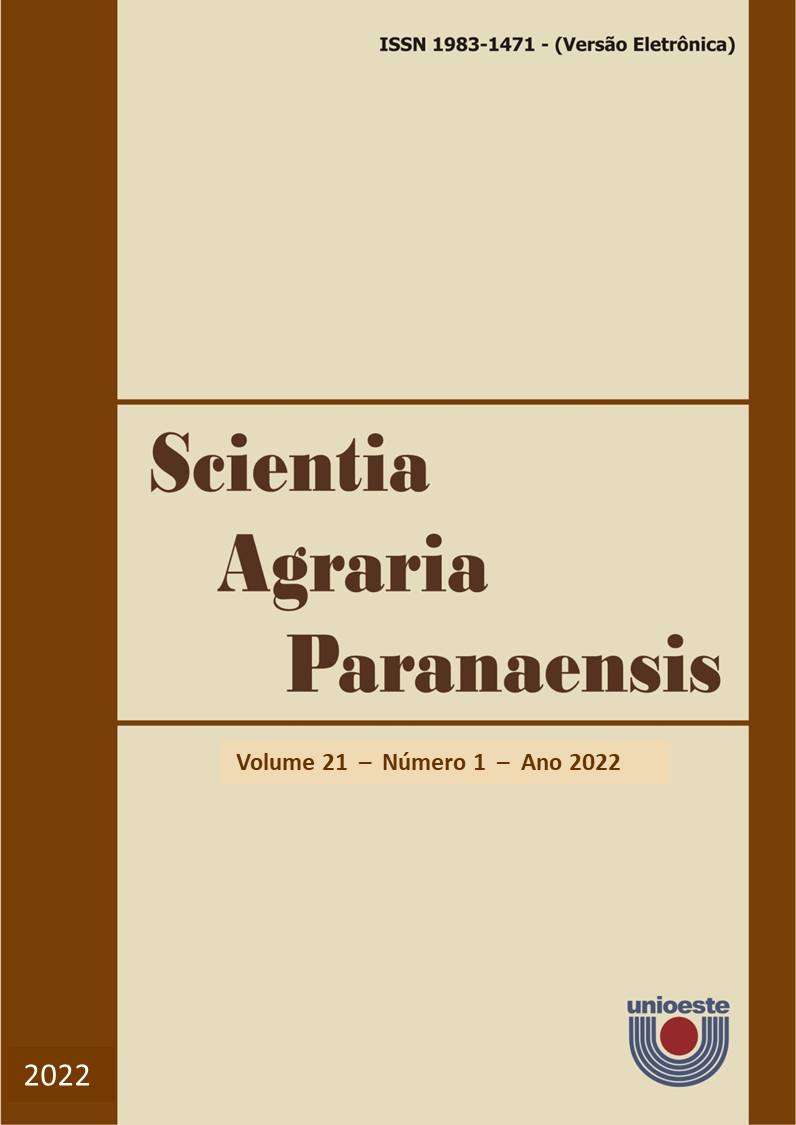Gametophytic self-compatibility and its influence on the physical characteristics of plum fruit
DOI:
https://doi.org/10.18188/sap.v21i1.28009Resumo
Gametophytic self-incompatibility can be one of the obstacles to achieving high yields in plum orchards. The objective of this work was to verify in the field the occurrence of gametophytic self-compatibility, and its influence on the physical characteristics of fruits in Japanese plum accessions.. The work was installed at the Research Pole of IDR-Paraná in Ponta Grossa-PR, in 2021, selecting six accesses belonging to the active Plum-GAB site. The experimental design was completely randomized (DIC) with a split plot (6 x 2), with the plot having six accessions and the subplot having two methods of pollination, induced self-pollination and free pollination, with five replications. For the variables related to the physical quality of the fruits, the DIC was delimited, with the six accessions as treatment and four replicates of five fruits. The variables observed for self-compatibility were the ercentagem of apparent and effective fruiting. For the physical quality of fruits, the total mass, seed and erc, vertical and horizontal diameter, volume, erc yield and seed/fruit mass ratio were evaluated. Free pollination was higher in the ercentagem of apparent and effective fruiting, and the genotypes PR-1013 and PR-1095 were the materials that presented the highest percentages for these variables, as well as for the physical quality of the fruits. The Japanese plum accessions evaluated were classified as self-incompatible, with free pollination as the best pollination method for the production and quality of fruits of this species.
Downloads
Publicado
Como Citar
Edição
Seção
Licença
Aviso de Direito Autoral Creative Commons
Política para Periódicos de Acesso Livre
Autores que publicam nesta revista concordam com os seguintes termos:
1. Autores mantém os direitos autorais e concedem à revista o direito de primeira publicação, com o trabalho simultaneamente licenciado sob a Licença Creative Commons Attribution que permite o compartilhamento do trabalho com reconhecimento da autoria e publicação inicial nesta revista.2. Autores têm autorização para assumir contratos adicionais separadamente, para distribuição não-exclusiva da versão do trabalho publicada nesta revista (ex.: publicar em repositório institucional ou como capítulo de livro), com reconhecimento de autoria e publicação inicial nesta revista.
3. Autores têm permissão e são estimulados a publicar e distribuir seu trabalho online (ex.: em repositórios institucionais ou na sua página pessoal) a qualquer ponto antes ou durante o processo editorial, já que isso pode gerar alterações produtivas, bem como aumentar o impacto e a citação do trabalho publicado (Veja O Efeito do Acesso Livre).
Licença Creative Commons
Esta obra está licenciada com uma Licença Creative Commons Atribuição-NãoComercial-CompartilhaIgual 4.0 Internacional, o que permite compartilhar, copiar, distribuir, exibir, reproduzir, a totalidade ou partes desde que não tenha objetivo comercial e sejam citados os autores e a fonte.


